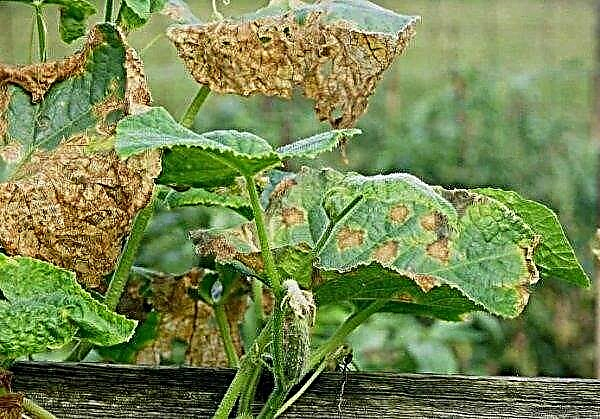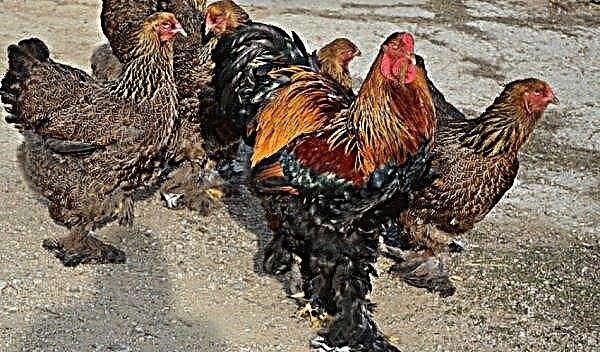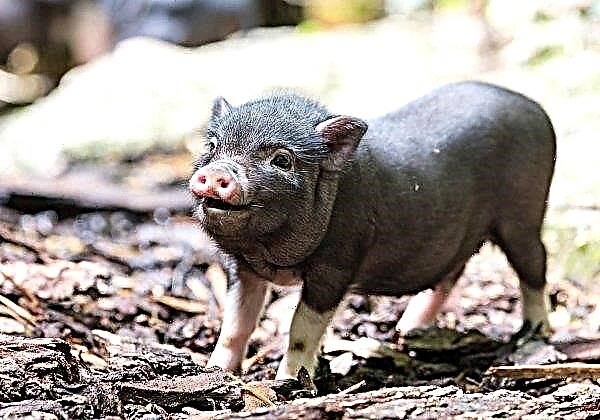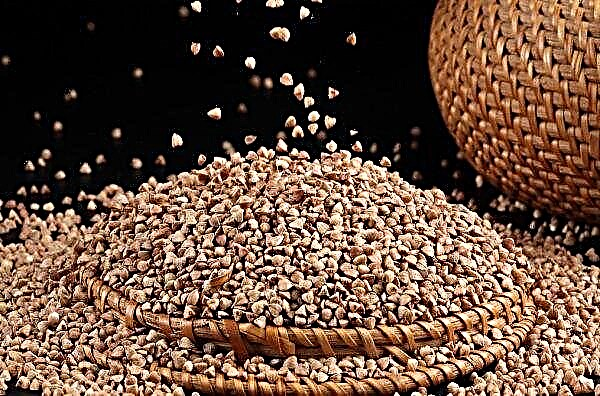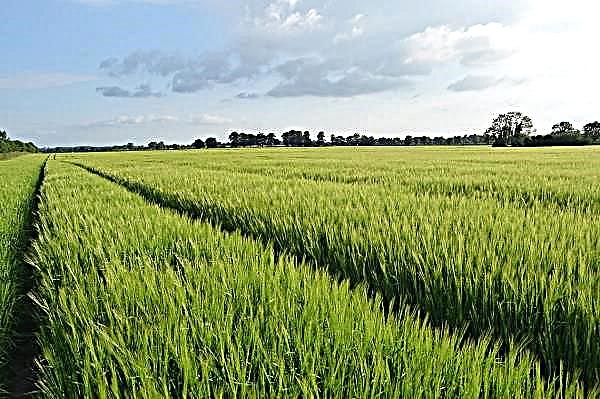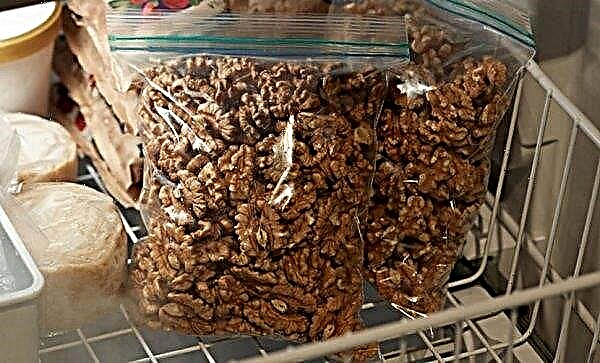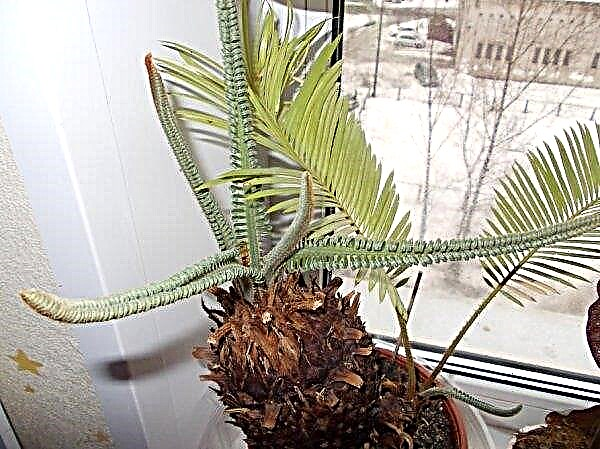Various varieties of begonias joined the ranks of ornamental plants about 200 years ago and since then have won the hearts of plant growers around the world. One of the most common representatives of the species is considered royal begonia (Rex). This flower has a bright and unique look, as well as a rather exotic combination of shades. In this article, we will consider in detail what this plant is, and also find out what is needed for its successful growth and development
Plant benefits
Not many people know that breeding begonias is not only interesting, but also quite a useful hobby that can bring a lot of benefits to a person.
The plant has the following qualities beneficial to the grower:
- unpretentious to living conditions;
- does not require painstaking care;
- contributes to the purification of air from small pollutants;
- possesses antimicrobic property.
Did you know? Plant volcanoes were officially discovered by the famous Soviet biologist Boris Tokin in 1928. Although in the second half of the XVIII century, Ilya Mechnikov claimed the existence of such substances.
In addition, the flower is able to produce specific substances in the air, the so-called phytoncides, which contribute to:
- strengthening immunity;
- increase resistance to stress;
- improving performance and endurance;
- good mood.
The main varieties and their description
Royal begonia is distinguished by its characteristic features, thanks to which the flower can be distinguished among many houseplants. Despite the high resistance of the species to all kinds of changes, in recent decades, breeders have created several dozen successful varieties that brought him enormous popularization.
General characteristics of royal begonias:
| Characteristic | Description |
| Root system | Powerful, creeping, branched. |
| Stem | Fleshy, branched, about 10–20 cm long. Covered with short reddish setae. |
| Leaf shape | Asymmetric, on the one hand, a characteristic sharpening develops, the edges of the leaflets are serrated. Depending on the type, the shape of the leaf blade can vary from heart-shaped to spiral-shaped or difficult to dissect. |
| Leaf color | Most often, green color with a variety of inclusions of scarlet, raspberry, lilac, purple and gray shades predominates. Leaf veins have a contrasting red tint. |
| Flower shape | Rounded, with fan petals. |
| Flower color | Blossoms in all shades of pink or pale pink. |
Mini merry christmas
This begonia is a low plant, reaching a length of 30 cm. This is one of the most variegated varieties among existing ones. A characteristic feature of the variety is a change in the shade of the leaves from the center to the periphery (from darker to lighter tones). The central part of the leaf is a brown hue, which goes to the edges in red and raspberry, and then in green and white. The lower part of the leaf blade is pronounced sinewy, with large veins, the upper part is velvety, soft to the touch.
The central part of the leaf is a brown hue, which goes to the edges in red and raspberry, and then in green and white. The lower part of the leaf blade is pronounced sinewy, with large veins, the upper part is velvety, soft to the touch.
Escargot
The Escargo variety is one of the largest among related varieties. This flower reaches a height of 30 cm, while its width can reach 40–45 cm. The surface of the plant is dull, and numerous villi are characteristic of it.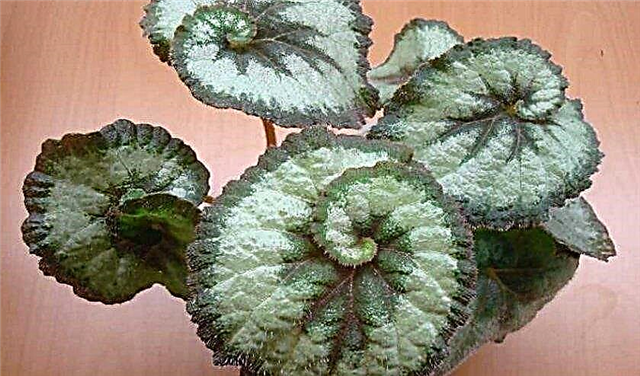 Leaflets are the main advantage of the Escargo variety. They differ in a swirling spiral shape, as well as a rich silver-green hue.
Leaflets are the main advantage of the Escargo variety. They differ in a swirling spiral shape, as well as a rich silver-green hue.
Did you know? Royal begonia was first discovered in 1856 on the territory of Assam (India).
Dark mambo
One of the most exotic varieties in crop production can be called Dark Mambo begonia. Its distinguishing feature is a rare, almost black shade of the outer side of the foliage. Sometimes greenish inclusions can lighten it, but always the leaf is quite dark in color. The inner side of the foliage is red-brown or brown-cherry in color. The plant has medium dimensions (about 30 cm in height) and a swirling, spiral-shaped leaf blade.
The inner side of the foliage is red-brown or brown-cherry in color. The plant has medium dimensions (about 30 cm in height) and a swirling, spiral-shaped leaf blade.
Grifon
Griffin begonia is a fairly tall plant with a height of about 40–45 cm. This is one of the few varieties that can be successfully grown in pots as a perennial plant and in the flowerbed as seasonal vegetation. Leaflets of the flower are large enough, divided into separate pointed areas.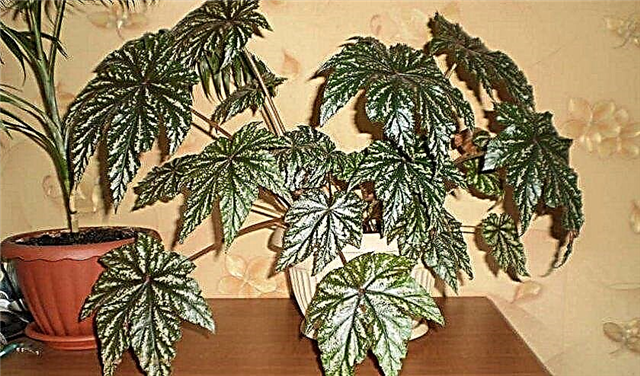 Their color is all kinds of green tones, with bright grayish patterns over the entire surface. The flower is unpretentious, so it can be successfully grown even by beginner gardeners.
Their color is all kinds of green tones, with bright grayish patterns over the entire surface. The flower is unpretentious, so it can be successfully grown even by beginner gardeners.
Dollar down
This variety is famous for its rich and bright red-cherry shade of foliage and compact bush size (the flower does not exceed 20–25 cm in height). The edges of the leaves have a dark, almost black border, which gives them a special contrast. The shape of the leaf blade is often asymmetrical, fan-shaped; its size gradually increases from the center to the outer borders.
The shape of the leaf blade is often asymmetrical, fan-shaped; its size gradually increases from the center to the outer borders.
Did you know? Begonias were named after the Governor of Haiti, Michel Begon, who, as a lover of exotic flora, donated a lot of money to an expedition to India to find new plants.
Prerequisites for maintenance
Despite the fact that begonias from nature are considered unpretentious plants, in order to get a beautiful and bright flower, it will take a lot of time. The first thing a plant requires is good lighting.
It needs intense and diffused light throughout the daylight hours. To do this, pots with begonia are placed on window sills in the east or west side of the house.
Also, this plant requires a special temperature regime. The flower does not tolerate heat, therefore, in summer, the temperature regime for it should be about +18 ... + 25 ° С, in winter, the temperature should not fall below + 16 ° С.
In this case, the optimal humidity in the environment of begonia content is important. The indicator should be within 50%.
When choosing a pot for begonia, one should take into account the fact that stagnation of moisture for the plant is unacceptable, therefore, the vessel must have good drainage abilities. The pot can be made of any material (ceramic, plastic, glass, etc.), while its dimensions play a dominant role.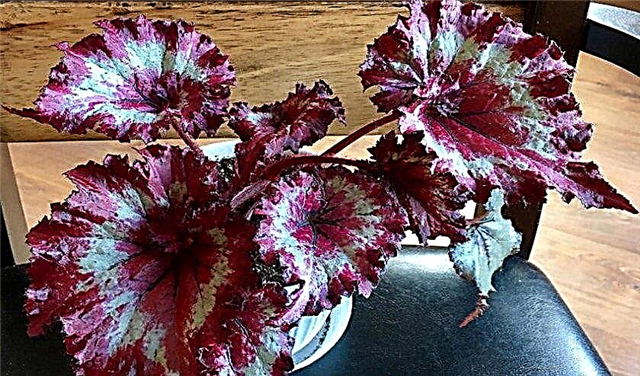 Young flowers are planted in vessels with a diameter of about 8-10 cm. Further, its sizes are selected by the grower independently on the basis of the size of the root system. At the same time, those vessels in which the root system occupies about 50-60% of the free space are considered optimal.
Young flowers are planted in vessels with a diameter of about 8-10 cm. Further, its sizes are selected by the grower independently on the basis of the size of the root system. At the same time, those vessels in which the root system occupies about 50-60% of the free space are considered optimal.
Soil for begonias can be used either as a special purchase, or prepared personally. Such mixtures are often made from sheet soil, peat and river sand (2: 1: 1).
An alternative to such a substrate can be a mixture of peat soil, coconut substrate, river sand and pine bark (2: 1: 1: 1) or a universal flower mixture, vermiculite, river sand, pine bark (2: 1: 1: 1).
Important! In order to get home-made begonia with high immunity, it is recommended to breed a flower in open soil. This will help sort out the most viable seedlings and harden the plants well.
Home Care
In addition to the above conditions, room begonias on the windowsill need to provide a special microclimate. To do this, you need to create the right care regimen, including top dressing and watering.
Therefore, when cultivating a flower, each breeder should definitely create a schedule of all kinds of maintenance measures, which must be followed and must be strictly observed.
Watering
Begonia is watered regularly, but in small portions. The main sign of the need for watering can be a dry soil crust in a flowerpot with a thickness of 0.5 cm or more. Despite the fact that in nature the flower lives in regions with a humid climate, additional humidification of the air when the begonia content is not required. However, varieties with large leaves require mandatory wet cleaning 1-2 times a month.
However, varieties with large leaves require mandatory wet cleaning 1-2 times a month.
Top dressing
Fertilize the plant with both organic and mineral fertilizers. As an organic top dressing, fresh manure diluted with water in a ratio of 1: 5 is most suitable.
For mineral top dressing, complex mixtures of phosphorus-potassium fertilizers are used, or such preparations as “Bud”, “Ovary”, “Bloom”, etc. They are applied top-dressing once a month, while the soil must be watered with water, the application of highly concentrated fertilizers in dry soil can cause burns to the root system.
Important! Watering and top dressing should be uniform, sudden changes in moisture and nutrient concentrations can cause inhibition of begonia growth until death.
Pruning
Begonia pruning is performed to rejuvenate the bush, as well as to create its optimal shape and size. The procedure is carried out regularly, at least 1 time per month. The first pruning is carried out when the plant reaches 10 cm in height.
The second - when the flower reaches a height of 12-15 cm, which helps to eliminate horse growth. In the future, the procedure is carried out according to a schedule or urgent need. Old, damaged and dried parts must be removed, this helps to establish the optimal balance between the size of the flower and the volume of its root system.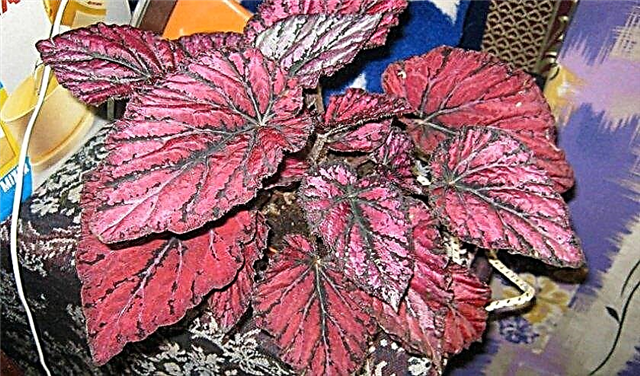 The procedure is carried out using a sharp knife. Other tools cause excessive tissue compression, which is detrimental to wound healing. The places of cuts are necessarily treated with powdered charcoal, which helps to avoid infection of tissues with all kinds of fungi and pathogenic viruses.
The procedure is carried out using a sharp knife. Other tools cause excessive tissue compression, which is detrimental to wound healing. The places of cuts are necessarily treated with powdered charcoal, which helps to avoid infection of tissues with all kinds of fungi and pathogenic viruses.
Transfer
Plants are transplanted as necessary when the pot becomes excessively small. The procedure is carried out every 3-4 years in the spring, which additionally helps to stimulate the growth of begonias, but young flowers are transplanted annually (or as needed).
To do this, the plant is carefully removed from the old pot, and then, together with the soil, the root system is treated with a 2% potassium permanganate solution (for disinfection). The optimal pot is one that is 5-6 cm in diameter larger than the previous one.
Breeding
Begonias reproduce without much difficulty in almost all ways - from seeds to parts of the plant, including tubers and rhizomes. For the success of the procedure, the grower is required to create minimal comfort, as well as stable temperature indicators.
The most optimal period for receiving young flowers is considered the middle or end of spring. At this time, the most active metabolism is observed, as well as the course of other physiological processes associated with the seasonal life cycles of the plant.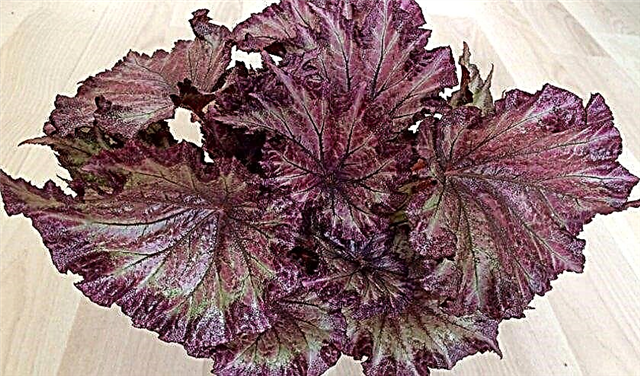
Leaves and cuttings
Propagation by leaves and cuttings occurs according to a similar scheme. For this purpose, specially prepared cuttings (stem fragments about 10 cm long with at least 2–3 buds) or leaves cut off at the base are used as genetic material for growing.
Rooted such blanks in two ways - in a liquid or moist soil:
- When rooting in a liquid, the material is soaked in clean water for several days, in a warm and bright place, at a temperature of at least +18 ... + 20 ° С. After thin roots 1–2 cm long appear on a fragment immersed in water, the seedlings are transplanted into a flowerpot. To accelerate the process, special rooting stimulants based on analogues of natural phytohormonal compounds are added to water.
- During germination in the soil, the material is immersed in at least a third in well-moistened soil. A mixture of peat and river sand (3: 1) is best suited as a substrate. After this, the plants are covered with a plastic film, not forgetting to moisten and ventilate once a day (10-15 minutes). After the first young leaves appear on seedlings, it is transplanted into a permanent flowerpot.
Important! Leaves and cuttings must be prepared from young plant fragments, since only they help to propagate the flower with a maximum viability coefficient.
Seeds
Reproduction by seeds is considered quite a troublesome and demanding process, so it is recommended exclusively for experienced growers. The most favorable period for sowing begonias is the end of winter (late January - early February). They germinate seeds in common garden containers or in small flower pots, while the substrate is a mixture of equal parts of any flower soil and river sand.
They germinate seeds in common garden containers or in small flower pots, while the substrate is a mixture of equal parts of any flower soil and river sand.
Before sowing, the seeds are soaked in water at room temperature for a day. Prepared seeds are scattered evenly on the soil surface and lightly pressed into it. It is not recommended to fall asleep tightly, since most of them will not be able to give a healthy sprout.
After that, the soil with seeds is moistened, covered with transparent glass or a plastic film, and then put in a well-lit place (with a temperature not lower than +22 ° C).
Shelter is not removed until a full 2-3 leaflets appear on the sprouts. After this, the seedlings are transplanted into common containers. From this moment, the seedlings are kept in a warm (+20 ... + 22 ° C) and brightened place, protected from drafts and sudden changes in heat.
4 weeks after sowing, the seedlings are ready for transplanting to a permanent place in a separate pot.
Roots and tubers
Underground parts propagate begonias grown on a flowerbed in an open environment. Thus, most gardeners extend the life of a flower until the next season. The process is often started at the end of August, after the first autumn cooling.
Roots or tubers are removed together with the soil, after which they are buried in flowerpots with cleaned river sand and put in a cool place with a temperature of +10 ... + 15 ° С. Under such conditions, tubers or rhizomes are matured until mid-spring, after which they are planted in open soil. At the same time, planting material is planted so that at least one of the viable buds is above the soil.
Under such conditions, tubers or rhizomes are matured until mid-spring, after which they are planted in open soil. At the same time, planting material is planted so that at least one of the viable buds is above the soil.
After that, the soil is abundantly watered with water and covered with a plastic film. After a full-fledged sprout appears from the soil, the polyethylene is removed, and the base of the sprout is covered with soil. Further care of the seedling is no different from growing adult plants.
Possible problems
Despite its resistance to various negative environmental factors, begonia is characterized by a rather high susceptibility to various diseases and pests. Although they are often not capable of causing death of plants, however, with intensive development they cause almost complete aesthetic unsuitability of plants.
Often this can serve as a thorough verdict for the destruction of even the rarest and most refined specimen.
Diseases
Most often, royal begonia is affected by the following ailments:
- powdery mildew - a complex infectious disease caused by parasitic fungi Erysiphales. The source of the disease is water, litter, garden tools, infected with fungal hyphae, etc. An infection manifests itself in the form of a white coating on the leaves and stem. It causes tissue destruction and inhibition of flower growth. They fight the disease with the help of complex fungicides for indoor plants ("Topaz", etc.). Apply them in two courses with a gap of 14 days. The concentration of the drug solution is selected based on the recommendations of the manufacturer;
- gray rot - fungal infection caused by the development of fungal begonia on the outer covers Botrytis cinerea. The source of the disease is soil contaminated with sclerotia or conidia of the pathogen or its residues.The disease manifests itself in the form of numerous gray, black or brown rotten spots on the stem or leaves. They struggle with the disease by spraying begonias with a 0.2% solution of Fundazole or a 1% solution of Bordeaux fluid;
- ring spotting - viral damage to plants caused by the virus Tomato black ring. The carrier of the pathogen are small nematodes belonging to the genus Longidorus. Most often, the disease manifests itself in the form of dark or light green spots on the foliage, smoothly turning into necrotic areas. Today, the disease is not treatable, therefore, to prevent its spread, the affected plants are burned.

Pests
Among pests on begonias actively develop:
- soft false shield - causes inhibition of flower growth, as well as deformation of the leaf blade. The pest can be detected due to the characteristic sugary secretions and the appearance of sooty fungi on the leaves and stem. To eliminate the pest, every 14 days (until the traces of the parasite disappear), the plant is treated with a solution based on the infusion of pyrethrum or garlic (10 g / l of water);
- greenhouse whitefly - a small white insect with a diameter of several millimeters. Parasitizing causes inhibition of begonia growth, as well as withering of leaves and stems. They fight the pest by treating the flower with a soapy solution (4 g of laundry soap per 1 liter of water);
- gall nematode - a microscopic worm that parasitizes in the root zone. The parasite causes the appearance of growths on the stem, which lead to the withering of begonias. They struggle with it by removing the affected areas of the plant, followed by processing a 0.05-0.2% solution of Heterophos;
- aphid - small black insects parasitizing on the back of the foliage and stem. Aphids cause wilting and drying of individual parts of the flower. Eliminate it by treating plants for 5–7 days with infusion of onions (15 g / l of water);
- spider mite - a small insect causing wilt of the stem and leaves. A tick manifests itself with a characteristic web, which braids around the affected areas of begonia. In order to overcome it, plants for 5-7 days are treated with infusion of onions (15 g / l of water).
 Royal begonia is a rather exotic, but at the same time unpretentious plant, so it can be safely grown in almost any climate, both in open soil and in indoor flowerpots.
Royal begonia is a rather exotic, but at the same time unpretentious plant, so it can be safely grown in almost any climate, both in open soil and in indoor flowerpots.Despite this, the plant requires a special microclimate from the person, including protection from pests, as well as common diseases. Otherwise, an exquisite begonia turns into an average garden weed.

